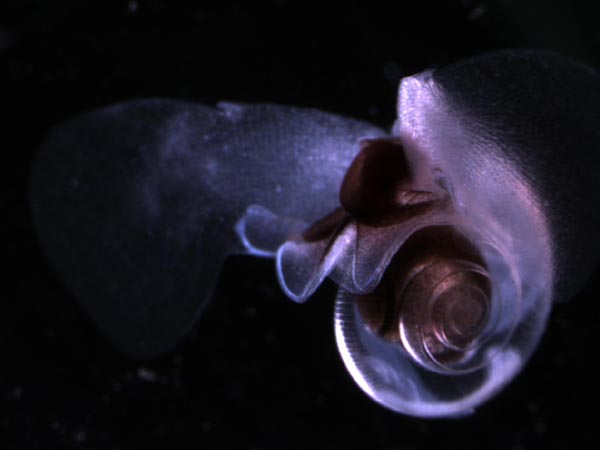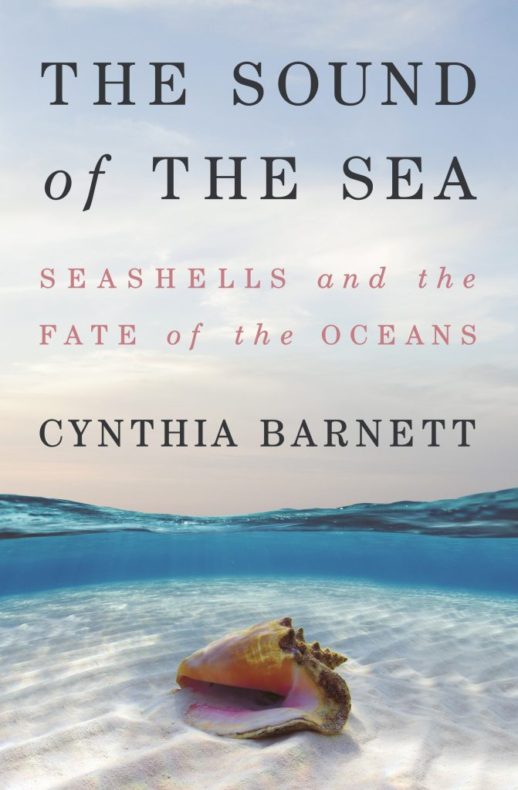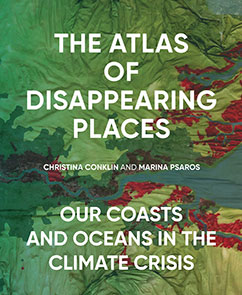
Earlier this month, I was walking along the beach in an sunrise fog when I saw a perfect sand dollar on the sand. I held it in my palm for a moment, debating: would I crush it between here and home? By taking it off the beach, would I bring some other misfortune, to someone else who was looking for the shells, or to the beach or the sea, which might need the sand dollar for an unknown purpose? I set it down and walked on, but still my mind rolled over the pale circle of a shell, so light in my hand, the shape of the feathery five-pointed star engraved on its front.
Cynthia Barnett, a science writer from Florida, shares the same fascination for what the tide washes up in her new book, The Sound of the Sea: Seashells and the Fate of the Oceans. The writing follows the spiraling design of a nautilus shell, moving from the earliest known forms of shelled creatures, found in the limestone and black shale of a remote mountain range on the Alaska-Canada border, to the uses of shells through time and toward their future, with shells and their inhabitants threatened by habitat destruction, microplastics, and a warming and acidifying ocean.

One of the examples Barnett gives is of the sea butterflies, marine snails that swim, gracefully, using their wing-like feet. As the ocean soaks in more carbon dioxide, it becomes more acidic—and this is already dissolving these butterflies’ shells. A 2014 study found that more than half of the sea butterflies sampled along the coast from California to Washington had severely dissolved shells.
“A shell too is a home, and the life’s work of the animal that secretes it layer by layer with minerals from the surrounding environment,” Barnett writes. I’d never heard of sea butterflies before, but suddenly I couldn’t stop thinking about them, swimming along as the homes they’d built disintegrated around them
Then, the sea butterflies appeared again, a day later, when I started reading The Atlas of Disappearing Places: Our Coasts and Oceans in the Climate Crisis. This book is full of maps, each painted (by artist and writer Christina Conklin) on a sheet of sea lettuce, each showing how different aspects of climate change are affecting a different place on the globe. I stopped on a map of projected surface pH in the 2090s, painted in fiery ink on a piece of sea lettuce that looks like weathered parchment. On the opposite page, Conklin and co-author Marina Psaros write about the sea butterflies again, saying that researchers had not expected to see the effect of the water’s increasing acidity as soon as they did.

Taken together, this makes me wonder what kind of home we are making for ourselves here. Will it be, thousands of years from now, something that a child—human, alien, anyone—will hold up to the light and admire? Or have we already dissolved the world around us too much to repair?
Barrett seems to suggest we might look to the shells before we, too, dissolve in despair.
Both sea butterflies and the nautilus are survivors—their ancestors weathered the most recent global mass extinction and the changing seas that came along with it. Shells, she writes, “take carbon from the sea and make it beauty.”
I don’t know how to do that yet. But as I turned for home, the clouds lifted behind me and I saw that there were dozens of sand dollar shells along the shore that I hadn’t noticed on the way out. I picked up one more and held it in the palm of my hand, where it felt fragile, and also strong. It is sitting on the corner of my desk now, like the compass rose on a map that is still being drawn.
*
Sea butterfly photo by Russ Hopcroft, University of Alaska, Fairbanks
I am in the middle of reading The Sound of the Sea now – it is a fascinating, lovely series of information-packed vignettes. I found two large seashells we have, one an old faded conch we blew at the memorial of a friend. The other I dug from beneath the landscaping of our new home. Compelled by the book to look up, I learned it is a hefty Helmet conch, the tip broken off. In a fall? To make a horn? Looks like a newer break, it was like this when I pulled it from the jasmine roots. I wish I could blow this one, to hear the difference in the shell shapes resonate in the humidity of Central Florida. Our lives in shells, like the lives of countless civilizations before us.